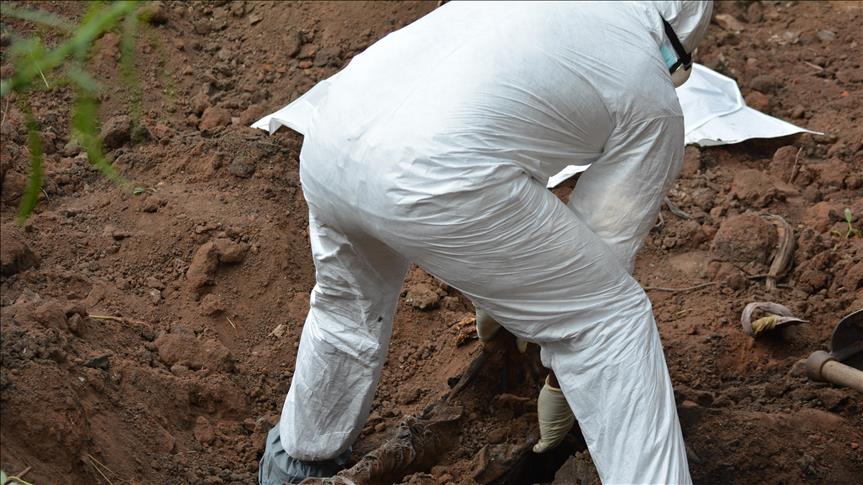Cambodia: The search for truth in Khmer Rouge-era bones
'We know people died, but how?' researcher asks, as she embarks on project to ascertain cause of death from bones.

Cambodia
By Lauren Crothers
PHNOM PENH
The first forensic research of its kind is underway in Cambodia in a bid to paint a demographic picture of the victims of the Khmer Rouge and the manner in which they were put to death.
Anecdotally, there have been numerous witness accounts describing the grisly ways in which the ultra-Maoist soldiers would dispatch their captives.
Some were bound together, others dug their own graves, some were hit with machete-like weapons in the back of the skull, others were shot.
Julie Fleischmann, a PhD student from the U.S.’ Fulbright program, told the Anadolu Agency on Monday that her forensic anthropological research will build upon work that was started by her Cambodian counterparts at the Toul Sleng Genocide Museum.
Ultimately, she hopes the results will be able to provide a more definitive answer with regard to how the Khmer Rouge executed their victims.
"We have eyewitness statements and historical records, but we have yet to actually go back to what’s physically left,” she said.
“This is the first time that bones are being analyzed.”
In a speech outlining the aims of her research, Fleischmann explained that she is honing in on specific data: the age-at-death and sex of the victims.
As records were kept fastidiously at Toul Sleng prison -- known as S-21-- when it was being operated by the Khmer Rouge, there have been “hundreds of thousands of document” to choose from.
Fleischmann has so far spent two months combing through a sample of 97 execution lists that were drawn up between March 1976 and September 1978.
“It’s very, very rare to have documents providing information about people before they died, so the archives at S-21 are an invaluable resource for researchers and anthropologists,” she said.
According to the lists, 5,972 victims had a listed execution date.
Not all had sex and age listed, but 4,907 were male and 876 were female.The average age was 29, but the range of victims aged from as young as 11 to 77.
Studying the remains of victims of a large-scale atrocity is important, Fleischmann said, because it “provides information not available from other sources, especially with regard to traumatic injuries.”
“We know people died, but how?” she asked.
The bones under examination will slowly reveal that to researchers over the next year.
“If there were no eyewitnesses to an atrocity, the human remains may be all we have to understand what happened,” she said.
“Evidence of violence is important for justice. If leaders of violent regimes are held accountable in a court of law…remains can explain the violence that occurred.”
Cambodia is a special case, because it is “one of only a few countries where human remains are accessible from a recent human rights atrocity,” she said.
To that end, her research is focusing on the execution sites of Choeung Ek -- widely known as The Killing Fields, and the place where a majority of S-21 captives were sent to their deaths -- and the Kraing Ta Chan security center in neighboring Takeo province.
The work so far has not been without its challenges; when the initial exhumations were being carried out around the country, skulls were separated from the rest of the bodies.
It is the skulls that Fleischmann is focusing her work on. Depending on visible injuries, she will be able to deduce what kind of trauma was inflicted.
The research is coinciding with hearings at the Khmer Rouge tribunal that are focusing on S-21 and Kraing Ta Chan -- among other places -- as key crime sites at which genocide, murder and internal purges were carried out.
Kaing Guek Eav, alias Duch, is set to appear before the court as a witness in the first week of June.
Duch was the chairman of S-21 and is currently serving a life prison sentence after being found guilty of crimes against humanity in 2012.
An estimated 1.5 million people died under the Khmer Rouge between April 1975 and January 1979.
Anadolu Agency website contains only a portion of the news stories offered to subscribers in the AA News Broadcasting System (HAS), and in summarized form. Please contact us for subscription options.







